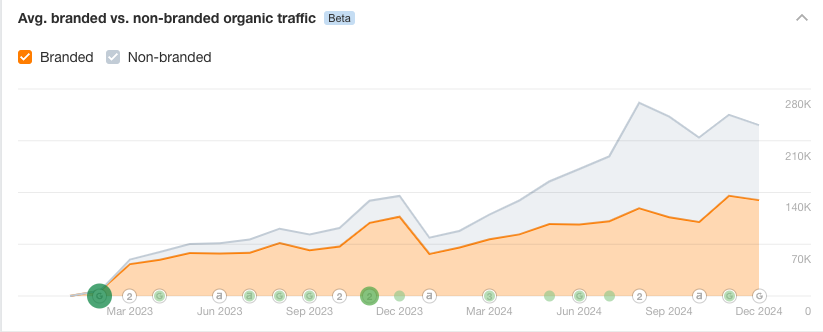Great content is the foundation of effective digital PR. Without great content, online publications won’t have any reason to use you as a source or link back to your site.
And it’s not just any content that you need for digital PR. Content that compiles data from original research and presents it in an easily understandable format seems to be more effective for digital PR efforts.
Publications don’t want to link to your site if your blog is full of promotional articles about your brand. But they do want to source you if you have helpful, informative content and data that further their story.
Not only is data-driven content more likely to attract links naturally, but sites are more likely to accept your stories if they are rooted in the unique source content. These ideas will help you determine ways to gather unique, data-driven source content for your digital PR.
1. Utilize data you already have
Using your own data is the best way to ensure that your content is unique and stands out. Presenting your own data shows initiative, provides your audience with content they can’t find anywhere else and immediately elevates your authority. Most companies have more owned data than they realize, but don’t realize the potential that data holds for them.
If you or your client has a website, then you already have data to utilize. Every website gathers data, whether it’s how a customer moves through the site or what customers are purchasing. This information is great for gaining insight into customer behavior and purchase trends. Anything from customer numbers to data specific to your products or services can be used to craft compelling content.
Utilizing the analytical tools that track your own website and marketing efforts can give you insights to use in your content marketing strategy. Google Analytics is a good stepping stone, as you can look into different consumer demographics such as age, gender, and location of customers, along with the industries they work in, what they buy, what devices they use, and more.
Data you already have can move past website data as well. Does your company do any yearly reports about industry data and trends? These can be great sources of information internally, that may have the potential to be posted to your site. Use them as source content data for your digital pr and you may see that publications seek out your company for larger, industry-wide trends to the source.
2. Survey customers
In some cases, it’s better to conduct your own research through surveys, rather than using readily available data. Conducting surveys is a great way to gather information and statistics around topics you specifically want to focus on. The key to getting the best data from a survey is to know exactly what you want out of it.
Customer surveys and user-sourced data are powerful ways to highlight what your product or service can share with others. Think carefully about the questions before asking them. You want to get the best results possible to generate a variety of angles to use in your content.
You’ll want to have some questions about your company specifically, but don’t be afraid to broaden your reach and ask some industry-wide questions. The broad survey data is often what publications would want to source in their content.
Before you begin, it’s important to think about what size sample base you need to make your research credible. You’ll want a sample size large enough to know that you can glean useful data from it.
How to survey customers
- Social media: Social is a great way to use the audience you have to get information. You could post a survey to your page and ask your audience to answer some high-level questions. You could also boost your survey and get insights from a new audience.
- Email surveys: You can send out an email survey to your existing customers. You can use a variety of online tools to conduct the survey. When you get your responses, you’ll have a unique view into exactly what your current customers think about you and your industry. That can help you iterate and optimize how you work with them.
And if you want to move past just your customers, you could even survey any email list you have of leads. That may be people subscribed to your newsletter, or who have reached out to you before.
Not only do you get helpful data through these surveys. The advantage of building and implementing your own surveys is that the promotion for it through social media or email marketing creates brand awareness in itself.
3. Compile other research
Aside from your own data, there are always plenty of data sources you can use and combine to make a whole new set of data. There’s nothing wrong with using existing data, but you can use it in a slightly different way.
You may be able to get the information you need so you can create data-driven linkable content that publications will want to source. You could analyze someone else’s data and approach it from new angles that haven’t been used yet.
If you’re unsure of where to start, some targeted google searching can help you find useful data. Social media is another outlet for information. Scour hashtags that relate to what you need and see if you can find the information you’re looking for.
If you don’t have the budget to conduct your own research or the data you already have isn’t sufficient enough, readily available data could be your answer.
Focus on Your Source Content Data for Digital PR
By considering these methods, you’ll be prepared to create content that attracts and engages your target audience. With high-quality content, you will start to get the attention of online publications that want to source you in their articles.
If you do your research correctly, it will result in powerful data-driven content that will boost your digital PR efforts.






